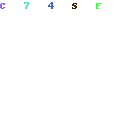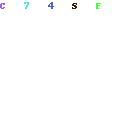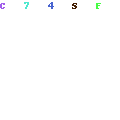Causes and Treatments for Lower Left Back Pain
Lower back pain, and particularly lower left back pain, is no stranger to most people. Unless the pain is due to heavy exertion on the part of the shoulder muscles, or due to a problem with the muscles in the vicinity of the neck, any backache you experience is most likely to occur in the lower or lumbar region of the back, rather than in the middle of the upper back. Furthermore, lower back pain (or lumbago) is most often felt on one side or the other, and less often in the middle.
Left Side Pain Is More Common – But Not by Much
There is nothing uncommon about experiencing pain in the left lumbar part of your back. In fact, for whatever reason, lumbago on the left side is somewhat more common than on the right side. Statistics seem to bear this out, and one of the reasons behind the statistics may have to do with pregnancies. When a woman becomes pregnant, the organs in her lower abdomen and pelvic regions get moved around to some extent. If an organ happens to be under too much pressure, pain can result.
Pain in the lumbar back area can sometimes be symptomatic of an underlying and potentially serious condition or disorder. When this is the case, either the urinary tract or the kidneys are most likely to be blamed. Pain is usually just as likely to be felt on one side of your back as the other, although bladder infections at times seem to favor the left side of the lumbar region of your back The exception would be an injury, most likely one that has occurred in a muscle on the left side of the body near the spine or in the hip area.
13 Causes of Lower Left Back Pain
1) Pregnancy and lower left back pain seem to go hand-in-hand for many women. The discomfort is most often caused when the increasing size of the uterus results in increased pressure on other organs and nerves. In particular, it is the sciatic nerve that tends to be affected. Pain will not always be confined to the back’s left lumbar portion but can travel through the hip and down the lower left leg as well. A softening of the ligaments caused by hormonal changes can add to the problem since these ligaments help to hold things in place. And the increasing weight of the baby doesn’t make matters any easier.
2) Kidney Infections will often cause discomfort in the lumbar area. A urinary tract infection that affects the left or right kidney, either simultaneously, or one at a time, is called Pyelonephritis. Symptoms tend to be acute, with backache often being accompanied by fever, chills, and nausea.
3) Kidney Stones can cause excruciating pain which is often centered in the lower abdomen initially, but can then radiate to the sides of the lower abdomen and to the back, and even down one or both of the legs. While the discomfort is not quite the same as that of the lumbar area caused by an issue with one of the back muscles or by one of the hip flexors, it is nevertheless painful. The fact that this type of back pain is usually accompanied by sharp abdominal pains and problems in urinating, points to kidney stones as being the problem rather than the muscles of the back or hips.
4) Spinal Stenosis,
on the other hand, is an issue with the back. It is a condition in which the spinal canal narrows and places pressure on the spinal cord. The spinal canal can become narrower in places due to arthritis, bone spur formation, or a herniated disk. Numbness, weakness, and discomfort in the lumbar area are some of the common symptoms.

5) Ankylosing Spondylitis is a form of arthritis that affects the spine. Its symptoms include pain that can be felt anywhere from the neck down to the lumbar area, often accompanied by stiffness in the spine. In severe cases, the vertebrae may fuse together, making the spine rigid in one or more places. Ankylosing spondylitis affects less than one percent of the general population and is most likely to affect men in their teens 20 It tends to center within the sacroiliac joints, where the sacrum, the lowest part of the spine, joins the pelvis.
6) A Herniated Disc
is most likely to occur in one of the five vertebrae that make up the lumbar part of the spine. These round, flat disks lie in between each of the vertebrae and act as cushions, or shock absorbers, as you move about. They consist of a tough, flexible outer ring encasing a gel-like center. Due to either wear and tear or injury, the center gel-like substance may begin to press against the outer ring. The gel and outer ring normally come into contact with only the nerves on one side of the spine. If this happens to be on the left spinal side, you will experience pain in the left side of the back’s lumbar portion.
7) Sciatica is actually a set of symptoms, two of which are lumbago and leg pain. Other symptoms of sciatica include numbness in the leg, or a pins and needles feeling. Causes of sciatica often include either the aforementioned herniated disc or spinal stenosis. Pregnancies will also cause flare-ups of sciatica on occasion. Any compression on the sacral or lumbar nerves as well as on the sciatic nerve can also result in sciatica and/or lumbago.
8) Lower Back Muscle Strain is a frequent cause of discomfort, which probably comes as no surprise. Muscle strain is normally caused by excessive pulling on a muscle and/or one of its tendons, for example, with the sudden lifting of a heavy object. A sudden twisting of the torso can be another cause, which will sometimes cause ligament damage as well. Having weak back or abdominal muscles, being overweight, or having an abnormal spinal curvature can increase a person’s risk of experiencing muscle strain in the lower back.
9) Sacroiliac Joint Dysfunction
is yet another cause of lower back discomfort. The sacroiliac joint lies at the base of the spinal column between the spine and the tailbone. Too little motion in this joint can, under certain circumstances, cause pain in the back as well, and the pain may extend all the way to the foot. In any event, when your sacroiliac is giving you problems, your first impulse is usually to place your hand against the joint in an attempt to relieve the pain, which is somewhat similar to sciatica.
10) Obesity is a major cause of back problems, including lower back discomfort. This seems to be especially true of those who are morbidly obese. Not only does obesity place stress on the muscles of the back, and on most of the weight-supporting muscles for that matter, but it is also a major contributor to poor posture, which will place even greater stress on these load-bearing muscles. In addition, morbid obesity increases the mechanical load on the spinal column, causing higher compressive forces and increased shear stresses, particularly in the lumbar spine. As more and more people become obese, the number of those experiencing lumbago, not surprisingly, seems to be following suit.
11) The Quadratus Lumborum (QL) Muscle
is a muscle in the lower back that serves primarily as a postural muscle. The QL is often a cause of lower discomfort that is commonly overlooked. If the gluteal muscles are weak or have become weakened, or they are being overused, the QLs are called upon to help stabilize the pelvis. The gluteal muscles and the QL muscles work together when walking or running, during the downswing of a golf club, or when the body undergoes sudden changes of direction during athletic events. If one of the QLs takes up too much of the load from the gluteal muscles, trigger points can develop. The result will often be discomfort located in the lumbar area of the back. Exercises to strengthen the glutes will also prove helpful in eliminating this particular source of pain and can release trigger points.
12) Poor Posture is a source of backache that a person can avoid if he or she is aware of not having proper posture. Lumbago caused by poor posture is usually a long-term rather than a short-term happening. Poor posture tends to put excess stress on the muscles in the lumbar area, as well as on the hip flexor muscles. Eventually, there may be a price to pay. Even in those cases where poor posture isn’t a direct cause of lumbago, it definitely can be a contributing factor if one of the other possible causes manifests itself.
13) Cauda Equina Syndrome has nothing to do with horses. The cauda equina is a bundle of nerve roots at the base of the spinal column, which, if compressed, can become paralyzed and cause debilitating discomfort. Cauda equina syndrome is a very serious condition and one which requires emergency treatment. Fortunately, although there are many causes of this syndrome, some of which have been addressed above, the syndrome itself is quite rare.
Treating Lower Left Back Pain
The proper treatment for any discomfort on the lower left side area of your back will naturally vary with the source of the pain as well as with the cause. In most cases the cause first needs to be diagnosed and addressed. In some cases, such as pregnancy, the only thing that can usually be done is to take pain relief medication when the pain becomes too severe. In the case of a kidney infection, antibiotics will often take care of the infection and, in the process, resolve any issues related to some back discomfort. If kidney stones are to blame, they usually need to be either broken up or surgically removed. A herniated disk may or may not require surgery, while the cause of sciatica or a sacroiliac joint dysfunction may at times be difficult to diagnose. Back problems in general can often be difficult to diagnose and cure.
Muscle strains
Are generally treated by using a combination of rest and ice. Problems caused by an overstressed QL muscle might be best addressed by doing whatever is necessary to strengthen the gluteal muscles. Poor posture and obesity are two causes people generally can do something about although in the latter case, it may take a great deal of time and effort to lose weight to the point that the spinal column and lower back muscles can once again lead to a normal existence.
The next time you experience discomfort on the lower left side of your back, you can at least rest assured in the knowledge that if the pain is on your left side, it more than likely does not have any special significance. You can always take stock of your lifestyle and perhaps pinpoint the cause of the discomfort. It may also be of some comfort to know, that if the pain is a symptom of a serious underlying disorder, there will most likely be one or more accompanying symptoms. If in doubt, see your doctor.







